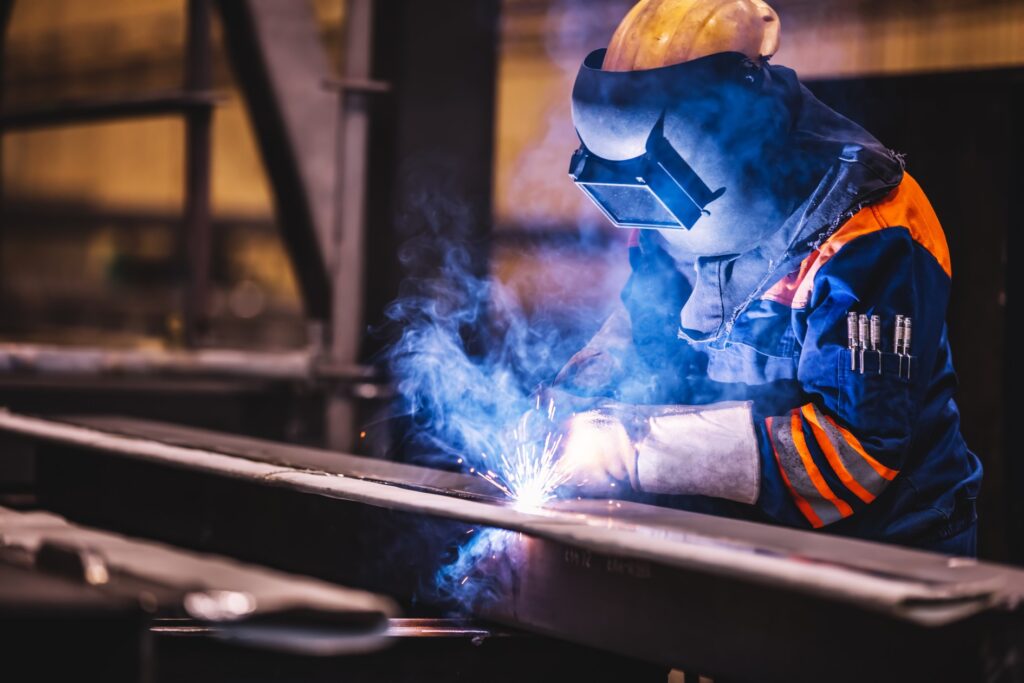
worker welding
The production process of hospital beds involves various stages, from design and material selection to manufacturing, assembly, and quality control. The goal is to create beds that meet the specific needs of healthcare facilities, ensuring patient comfort, safety, and ease of use. Here is an overview of the typical hospital bed production process:
- Design and Conceptualization:
- Engineers and designers work together to create a hospital bed design that meets industry standards, safety regulations, and the specific needs of healthcare settings.
- Considerations include features such as adjustable height, head and foot sections, side rails, and mobility options.
- Material Selection:
- High-quality materials are chosen for durability, ease of cleaning, and infection control. Common materials include steel, aluminum, and various types of plastic.
- Bed surfaces may be covered with materials like vinyl or polyurethane for comfort and hygiene.
- Frame Manufacturing:
- The bed frame, which provides the structural support, is manufactured using processes like welding or metal forming. The frame design allows for adjustments in height and positioning.
- Some hospital beds are equipped with electric motors for powered adjustments.
- Surface Construction:
- The mattress support surface is designed for patient comfort and pressure distribution. This may involve the assembly of a spring system, slats, or a deck that can be adjusted to meet medical requirements.
- Mattresses may be made from materials designed to prevent pressure ulcers and enhance patient comfort.
- Adjustable Features:
- Beds often have adjustable features such as height, head, and foot sections. Motors or manual mechanisms are integrated to allow healthcare providers to customize the bed configuration based on patient needs.
- Side rails, if included, are manufactured to ensure patient safety.
- Assembly of Components:
- Various components, such as motors, control panels, side rails, and casters, are assembled onto the bed frame. Attention is paid to the proper functioning of adjustable features and safety mechanisms.
- Electrical Systems (if applicable):
- For electric hospital beds, electrical systems are integrated, including wiring, control panels, and safety features. These systems are tested thoroughly to ensure reliability and compliance with safety standards.
- Quality Control and Testing:
- Each hospital bed undergoes rigorous quality control checks to ensure that it meets safety, functionality, and durability standards.
- Functional tests include checking adjustable features, motors, and safety mechanisms.
- Finishing Touches:
- The hospital bed may undergo finishing touches, such as painting or coating for aesthetic purposes and to protect against corrosion.
- Labeling, branding, and user instructions are added.
- Packaging and Shipping:
- Once the hospital bed passes all quality control checks, it is packaged securely for shipping to healthcare facilities, distributors, or retailers.
- Installation and Training:
- Some hospital bed manufacturers provide installation services and training for healthcare personnel on the proper use and maintenance of the beds.
- Post-Sales Support:
- Manufacturers often offer post-sales support, including warranty services, replacement parts, and technical assistance.
Throughout the production process, adherence to medical regulations and standards is crucial to ensure the safety and functionality of hospital beds in healthcare environments. Continuous improvement and innovation are also essential as manufacturers seek to enhance features, optimize designs, and address evolving healthcare needs.